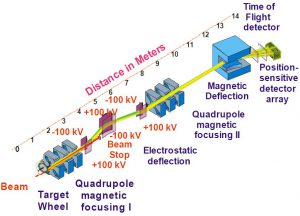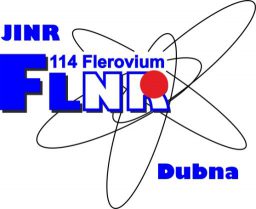VASSILISSA
“VASSILISSA” electrostatic separator was put into operation in 1987 and used in U400 accelerator heavy-ion-beam experiments. At that time the setup included a rotating target device, a separation system consisting of three electrostatic capacitors, a focusing system of 
two quadrupole lens triplets on the bombarding ion beam axis in front of and behind the separation system and receiving apparatus consisting of detectors for registering recoil nuclei and their decay products. Since the start-up “VASSILISSA” setup has been used for study of formation cross-sections and properties of (RN) recoil nuclei radioactive decay in heavy-ion induced fusion reactions in the wide range of reaction input channel mass-asymmetry (0.07 ≤ Aion/Atarg ≤ 0.3) and compound nucleus excitation energies (20 MeV ≤ E* ≤ 150 MeV). In the course of experimental work the ion-optical parameters of the separator were optimized, exploitation characteristics were analysed and detecting system and some units were updated. In 1995 the additional dipole magnet, having a recoil nuclei beam deflection angle of 8° was installed behind the second triplet of quadrupole lenses. It provided an additional suppression of scattered beam ions by a factor of 10-20 depending on the flying-ion – target-nucleus combination. In 1997 the new detecting system of five multi-strip detectors was installed in the focal plane and assembled in the form of a “well”. Each detector is the size of 60 x 60 cm2 and has 16 strips. Focal detector which forms the bottom of the “well” has along-strip positional sensitivity. During the years 2001-2002 update the 8° magnet was replaced with the 37° one. The new magnet enables an additional, better than the previous magnet, suppression of the background nuclear reaction products and scattered beam ions as well as mass-analysis of the recoil nuclei under study. Technical parameters of that period
|
